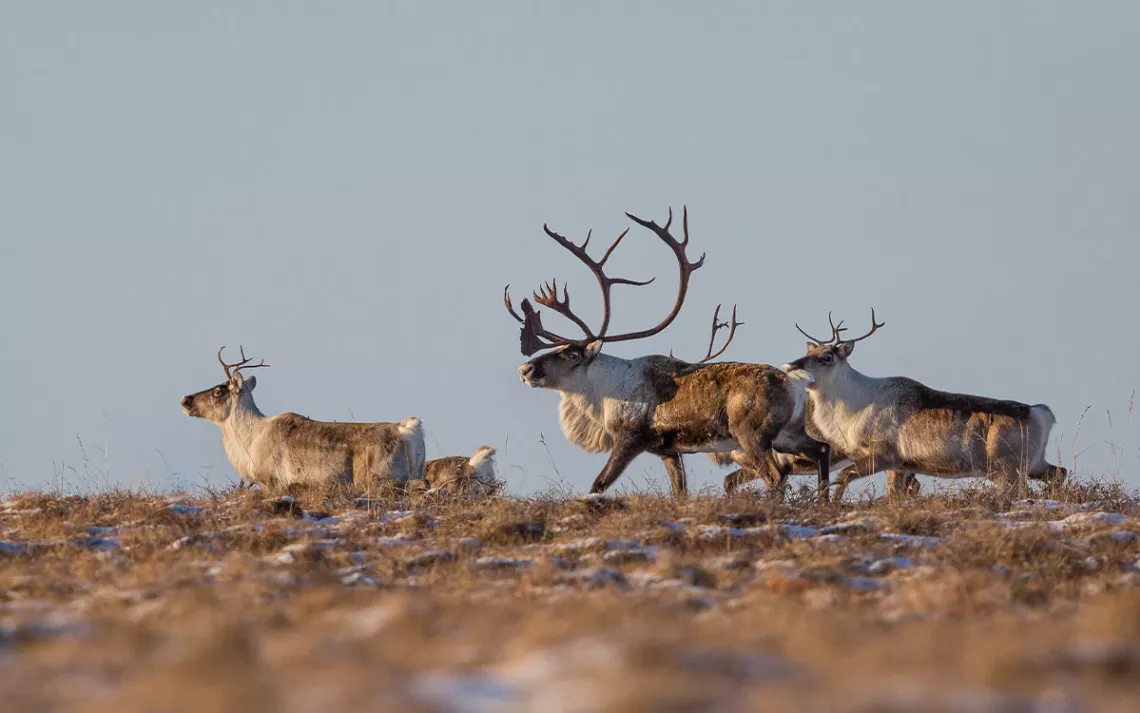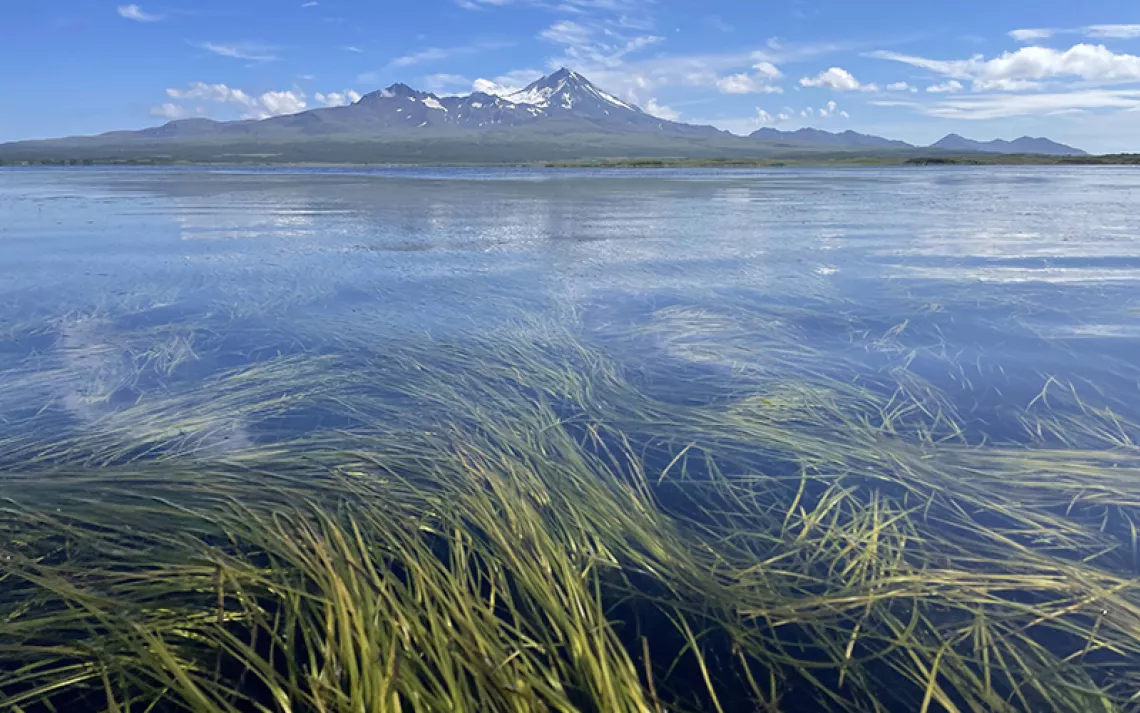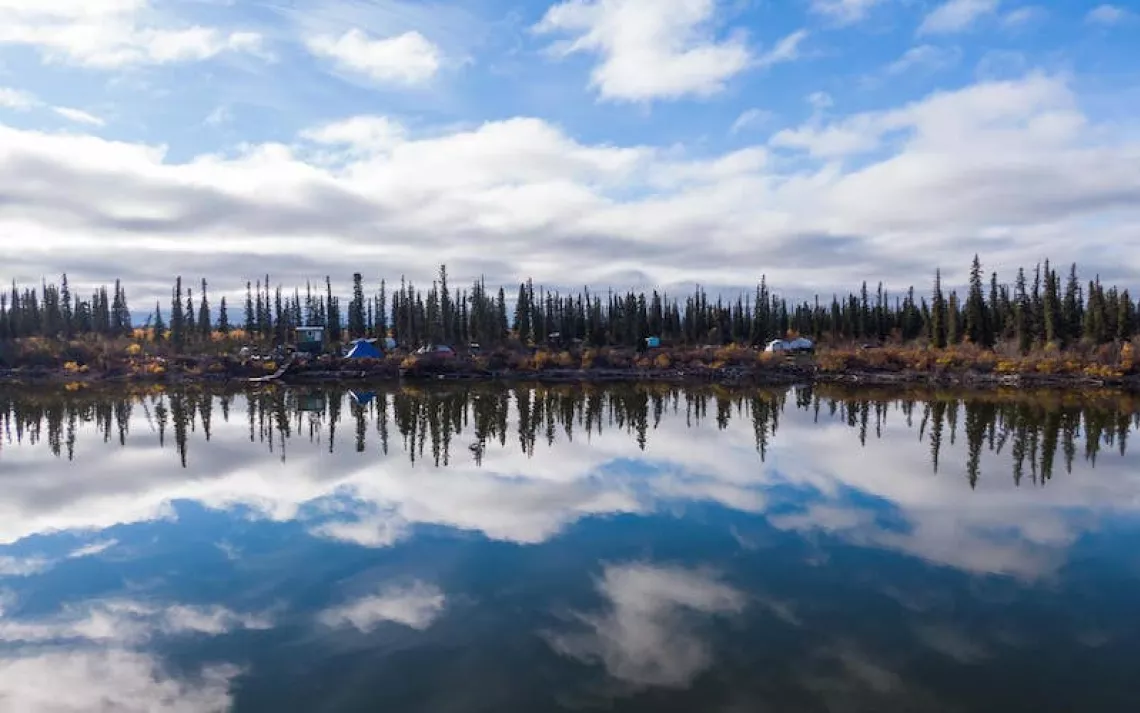This Mining Road Would Fracture the Western Arctic Caribou Herd
The Ambler Road would be a disaster for Arctic Alaska—it’s your chance to help stop it

Migrating Western Arctic caribou herd. | Photo courtesy Jim Dau
Correction: This article has been updated since its original publication to include the position of Ambler Metals.
The Ambler Road, 50 miles above the Arctic Circle, is the last thing Native hunters and wildlife need. At present, Alaska’s Brooks Range is one of the most remote places on the planet. It spans vast protected wilderness areas like the Arctic National Wildlife Refuge and Gates of the Arctic National Park and is largely roadless. Its few remote outpost towns and Alaska Native villages are accessible only by air or water.
That wild status could soon change. The Alaska Industrial Development and Export Authority wants to build a road to enable huge open-pit copper and zinc mines on the southern flanks of the Brooks Range. A permit for the Ambler Road, as it is known, was issued by the Trump administration but suspended by President Biden, pending further environmental study. A draft of the study was released October 13; it finds that the road would be even more harmful to Northern Alaska’s environment—and to Alaska Native subsistence cultures—than previously thought. (You can comment on the study below.)
As proposed, the road would span 11 major rivers, including three designated Wild & Scenic (the Alatna, John, and Kobuk Rivers), and 3,000 streams. It would carve 26 miles through the Gates of the Arctic National Park. The road would require over 40 gravel mines, including a quarry every 10 miles, to provide enough material for construction, plus numerous maintenance stations, worker camps, communication towers, and airport runways. The Ambler Road would require significant infrastructure through the boreal forest, with single-span steel bridges supporting an estimated 168 ore trucks rumbling around the clock. It would be built on permafrost, requiring constant maintenance. According to the State of Alaska, this industrial road wouldn’t be open to the public or even nearby villages, where many of their homes don’t even have running water.
It would facilitate, however, Ambler Metals LLC’s plans to extract $7.5 billion of copper from the Arctic Deposit under Ambler Mountain, near the village of Kobuk. Ambler Metals says the copper is needed for modern technologies to address climate change, like wind turbines and batteries. “Are we going to turn to our grandchildren who live in a depleted, industrialized, and destroyed planet and say, ‘You know, the iPhone 16, though, that was pretty cool’?” responds April Monroe, Native lands manager for Tanana Chief’s Conference.

Sign up to receive Sierra News & Views
Get articles like this one sent directly to your inbox weekly.
With this action you affirm you want to receive Sierra Club communications and may vote on policy designated by the Sierra Club Board.
Copper mining has the highest risk of acid mine drainage of any metal. Such drainage requires millions of dollars to control and contain in perpetuity, and it has severely impacted many fisheries when the controls fail. In many cases, once revenue and profits dry up, the responsible parties also vanish, leaving locals and future generations to bear the cost of cleanup.

The Jade Mountains, about 10 miles west of the western terminus of the proposed Ambler Road, are within one of the most heavily used migration areas used by the Western Arctic caribou herd. | Photo courtesy Jim Dau
For its part, Ambler Metals argues that copper is a critical element for meeting the nation's climate-action goals and maintains that it is able to extract the ore safely. "To reach US decarbonization targets and implement existing climate laws, there’s an urgent need for a domestic supply of the critical minerals that the Ambler mining district can provide. Ambler Metals’ project is an essential part of the national supply chain for raw materials to manufacture clean power technologies without relying upon China," a company spokesperson emailed Sierra. "Alaska has a long track record of responsibly developing its resources with minimal environmental impact. There’s substantial evidence that caribou herds have thrived near similar road developments on Alaska’s North Slope and in Northwest Alaska without any impact on migration."
Sixty-six tribal communities whose subsistence activities could be severely impacted by the road have a standing resolution against the road. “The opposition to the road from within the region centers on food security and environmental health,” says Brittany Sweeney, a founding member of Protect the Kobuk, a group of northwest residents opposing Ambler Road. “There are few places left in the country where Indigenous people can continue to nourish themselves from the land, and once that goes away, it’s nigh impossible to get back.”
The road would fragment the habitat of the Western Arctic caribou herd, one of the largest herds in Alaska, and which many Alaska Natives rely on for subsistence. The herd’s numbers are already decreasing, from 490,000 caribou in 2003 to 164,000 in 2022.
“The Ambler Road has a high potential to affect the movements of this herd. We’ve already lost two-thirds of the herd,” says Jim Dau, a retired caribou biologist with Alaska Fish and Game. “I suspect climate change is driving this decline rather than roads. Regardless, it’s a terrible time to pour gas on an already blazing fire by fragmenting habitat and affecting movements.”
The State of Alaska has budgeted $48.8 million to study route options, conduct surveys, and begin biological, hydrological, and geotechnical field studies related to the Ambler Road.
“The state keeps saying that with responsible development, we can have jobs, energy, metals independence, and all this stuff without impacting wildlife or subsistence,” says Dau. “It’s a great sound bite but a pie in the sky. It’s unrealistic with what I’ve seen with other projects in Alaska.”
Stanley Hawley, a resident of the village of Kivalina, says, “My concern is about having the State of Alaska in charge of the environmental regulation for the project. It would be putting the fox in charge of the chicken coop.”
The October 13 environmental impact statement released by the Bureau of Land Management is for the entire stretch of road, not just the part on federal land. It recognizes that the development could be disastrous to Alaska Natives' subsistence ways of life and cause the permafrost to melt much faster than previously thought, further harming the already struggling caribou populations. Public comments are being accepted on the EIS until December 19, 2023.
“There are few places left in the world that we haven’t polluted, built roads through, and mined, which have displaced traditional lifeways,” says Sweeney of Protect the Kobuk. “Will we ever learn from the past, or keep doing that until it’s done everywhere? When is enough ever enough?”
 The Magazine of The Sierra Club
The Magazine of The Sierra Club



